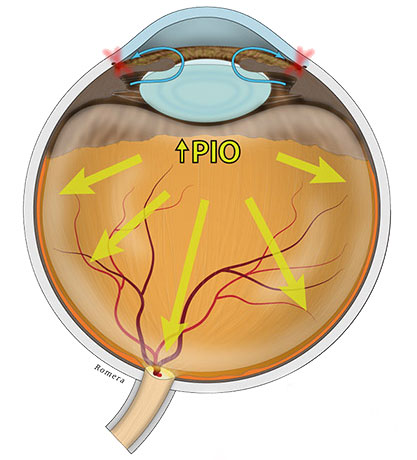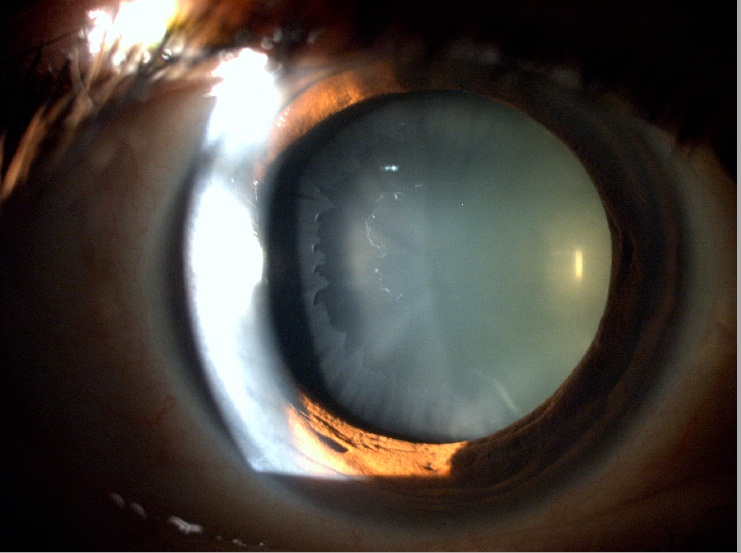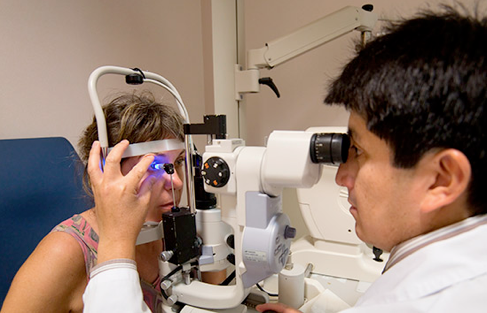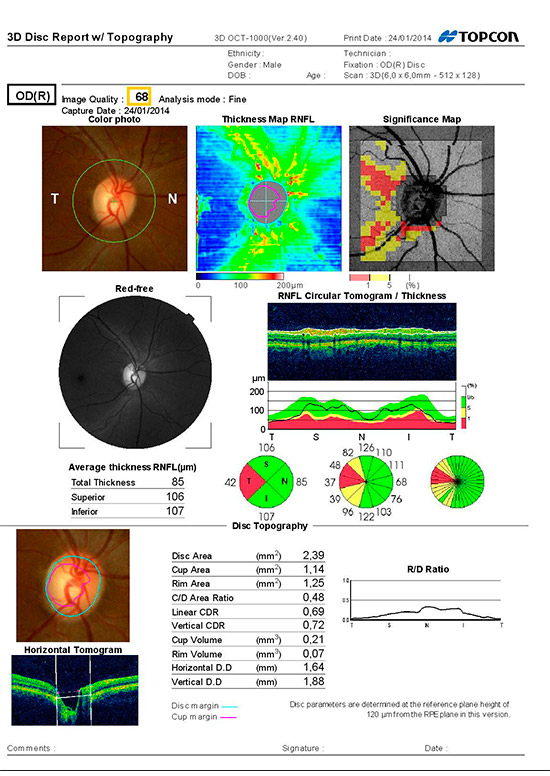Glaucoma
What is glaucoma?
Glaucoma is a disease characterised by progressive lesions atrophying the optic nerve. This leads to impairment of the peripheral visual field and may cause blindness if not diagnosed and treated correctly.
It affects more than 1 million people in Spain, and it is estimated that 50% of cases go undiagnosed. This means that regular check-ups are extremely important.

50% of glaucoma patients are undiagnosed”. Regular check-ups can help detect the disease.
Causes of glaucoma
The eye produces a liquid known as the aqueous humour, which shapes the eye. When this liquid is obstructed and unable to drain, it can accumulate, increasing the internal eye pressure, known as the intraocular pressure (IOP). The IOP affects all the fibres of the optic nerve, leading to poor irrigation, which in turn leads to deterioration and progressive atrophy.
The most significant but by no means the only risk factor is increased intraocular pressure. Other risk factors are age (being over 40), myopia, diabetes, cataracts or family history (it may be hereditary).

The increase in intraocular pressure leads to degeneration in the fibres of the optic nerve and reduced blood flow.
Tipos de glaucoma
The angle of the anterior chamber is the area between the iris and the start of the cornea, where aqueous humour comes out (the eye “drainage”). It may be in open or closed angle, or a patient may be directly born without it, as in the case for congenital glaucoma. Glaucoma is defined based on this angle.
The most common types of glaucoma are:
- Open angle glaucoma (chronic): This is the most common form. The causes are not clear. A moderately high level of ocular pressure. Progression is slow and painless. There are no symptoms until it is in the advanced stages.
- Closed-angle glaucoma (acute): Due to the closed angle, the aqueous humour exit is blocked with the iris after pupil dilation (whether this is pharmacological or not). It leads to a large increase in IOP and is very painful, meaning that urgent treatment will be required.
- Congenital glaucoma: This occurs from birth due to abnormal ocular development during gestation. It requires surgery.
- Secondary glaucoma, which is not caused by the opening of the angle:
- Tissue covers the aqueous humour exit, such as iris cells or blood vessels in the angle.
- Certain drugs can increase IOP, such as corticosteroids.
- Viral infections which lead to inflammation of the iris.
- Injury (blows to the eye).
- Systemic diseases, such as diabetes, hyperthyroidism, some cardiovascular diseases and different ocular syndromes.

Secondary pseudoexfoliative glaucoma. A whitish material with irregular edges (pseudoexfoliation material) is observed on the lens.
Evaluation
Diagnostic techniques
- Goldmann Tonometry (IOP measurement): The ophthalmologist measures the intraocular pressure directly on the eye.
- Evaluation of the optic nerve with a magnifying glass, through which the ophthalmologist can examine the colour, size and typical characteristics.
- Evaluation of the angle through a three mirror lens.
Technological instruments
- Optical coherence tomography (OCT): Evaluates the real damage to the fibre layer of the optic nerve. This can tell us about any early damage in the optic nerve which has not yet been seen in the visual field.
- Campimetry measurement of the visual field: This test evaluates the visual affectation of the disease. Glaucoma has a characteristic pattern.
OTHERS SPECIALITIES
Glaucoma treatment
The treatment objective is always to reduce the IOP to values which are not dangerous. These IOP values can differ from person to person. Although there are standardised values, not all patients are the same. We look for an “objective pressure” where the IOP does not damage the optic nerve. There are two types of treatment:
- Pharmacological methods (eye drops).
- Surgical methods, in cases where eye drops are not sufficient.
At times it is necessary to combine both.

Frequently Asked Questions
If you discover in a consultation that you have a narrow eye angle, this is a risk and the doctor will probably recommend a preventative treatment. This involves using a laser to open up an alternative route for the aqueous humour. Surgery is not required.
- Have regular ophthalmological check-ups (at least once per year).
- Patients who are at risk (family history, myopia, diabetics) must have periodic check-ups every 6 months of the IOP, OCT and visual field.
- In patients over 40, intraocular pressure must be checked at least once per year, along with the OCT and visual field.
- Patients over 60 will require a check-up every six months.
- If glaucoma has already been diagnosed, it is essential to strictly follow any prescribed treatment.
Related entries
Glaucoma, the silent disease
By the time symptoms appear it is already late, and the disease is usually in its advanced stages. That is…






